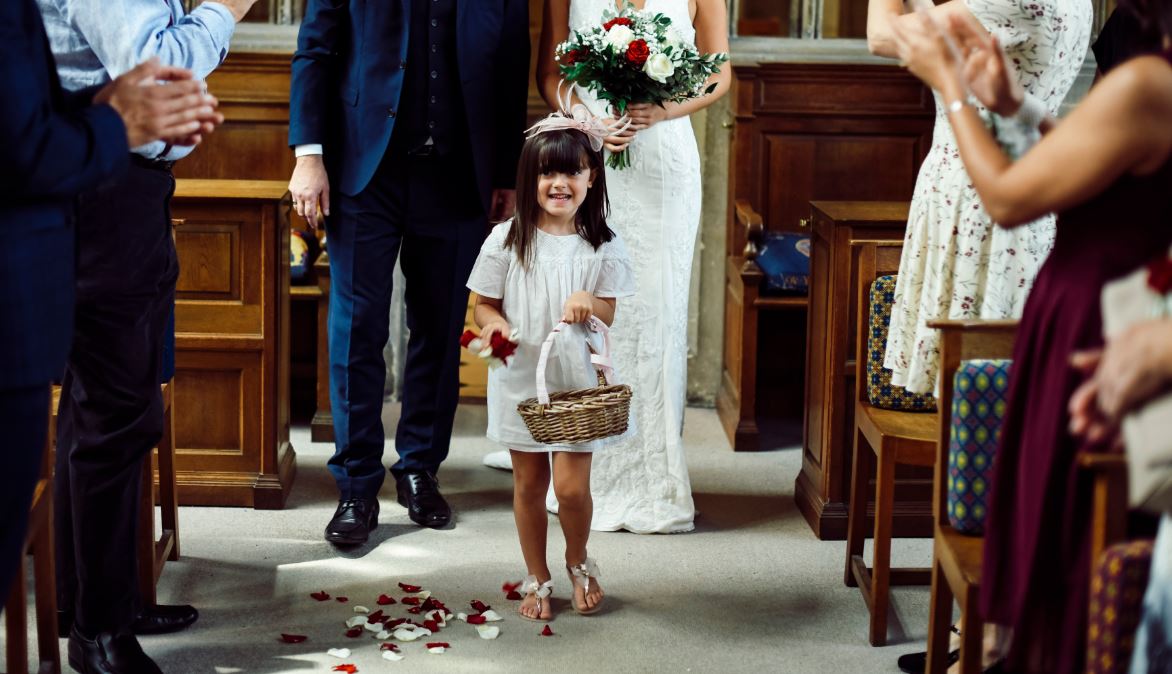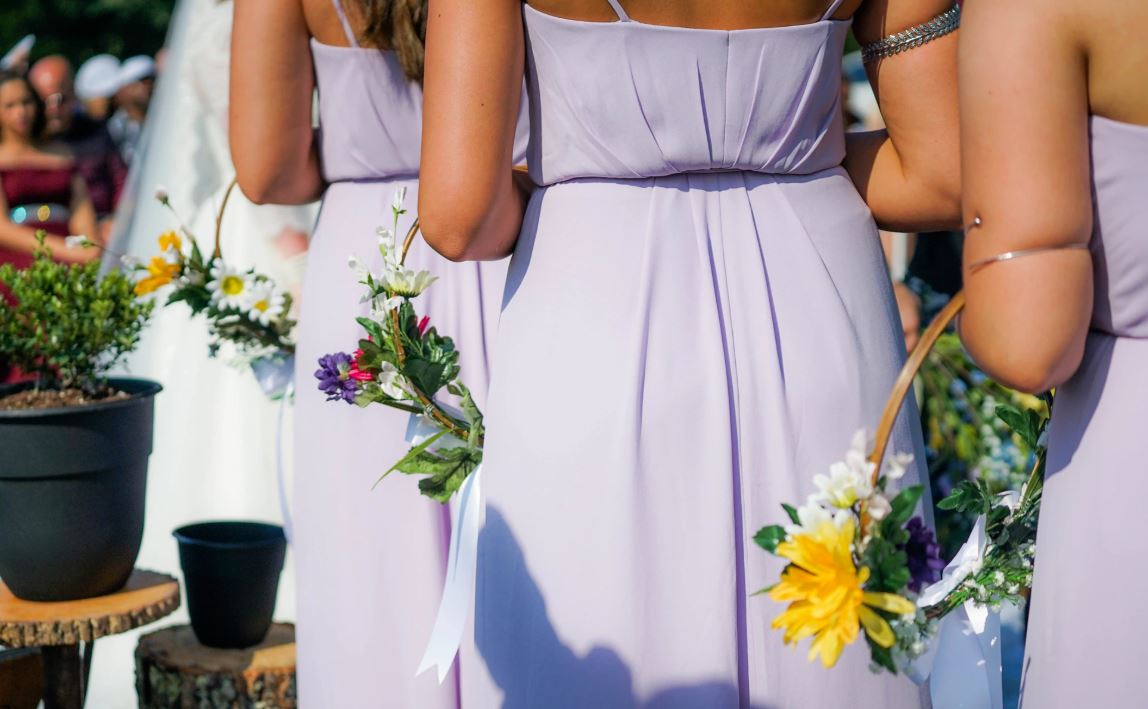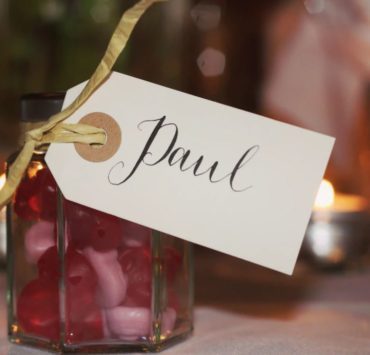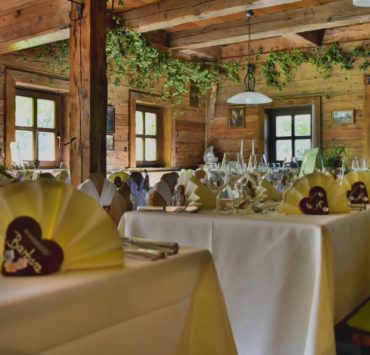As soon as you and your partner decide on a wedding date, you’ll have to decide if you want a church wedding ceremony, a court civil wedding, or a wedding ceremony at an outside reception. Should you opt for a traditional church wedding, that means choosing the members of your wedding entourage.
A traditional western wedding entourage is very different from a Filipino wedding entourage. This is because of our family-oriented culture, religion, and other practices we’ve had long before colonization. In this article, we talk about the different members of your wedding party, what their roles are, and how to pick the person you want for that role.
What Is a Wedding Entourage?
While the ancient purpose of some wedding entourage members are now thankfully obsolete, most of your entourage members’ roles are fairly symbolic and for tradition’s sake. So, aside from your primary sponsors, all these roles are optional.
Your wedding entourage will stand on the sides of the altar and the front pew of the church to witness your wedding. Since they will be the closest to you at your wedding, they should be the closest family and friends you want with you on your big day.
If you want to go traditional and go through with the different Filipino wedding traditions like the candle, veil, cord, and coin ceremony, you’ll want to have most or all of the entourage complete. But, again, this is not necessary to make the wedding legal.
Principal Sponsors
Whether or not you choose to have a wedding entourage, your principal sponsors are the only people you’re required to have for a legal wedding.
Role
Their purpose is to act as witnesses during your ceremony and then sign your wedding contract. You need at least two principal sponsors to sign your marriage contract in front of someone legally authorized to perform weddings (in this case, your wedding officiant priest) for it to be valid.
Choosing Your Principal Sponsors
You only need two, and while there is no firm maximum number of sponsors, some churches may put a cap on how many they’ll allow you to have.
-
Yes
- At least 18 years old
- At least two principal sponsors present at the wedding. Can be a combination of one male, one female / two males / two female sponsors
- Sponsors can be related/non-related to the bride or groom
- Principal sponsors are traditionally married, but it’s OK if the sponsors are single
- A man and woman married to each other can serve as the two principal sponsors.
-
No
- Someone under the legal age of 18
- Less than two principal sponsors present at the wedding
The only solid criteria of an acceptable principal sponsor are that they are of legal age, which is 18 years old in the Philippines. This is because they’ll be signing a legal document, so they have to be adults otherwise your marriage can be voided.
Traditionally, your principal sponsors should be your ninangs, ninongs, or godparents who are married and can give good marriage advice to you and your partner before and after the wedding. However, it’s OK to choose someone who is still single to serve as your principal sponsor if you don’t have anyone married in mind to sign. What matters is you’re getting someone close to you to stand as a witness.
Secondary Sponsors
The secondary sponsors are those who will be tasked with handling the cord, veil, and candle ceremony during the wedding. Contrary to the word “sponsor” in their names, they will not be providing these materials, so don’t forget to procure these during wedding preparations.
Role
During a traditional Catholic Filipino wedding, the three ceremonies are symbolic ways of uniting the bride and groom. Each pair of secondary sponsors will perform each ceremony, so if you’re going to have different sponsors for each one, you’ll need at least six secondary sponsors.
-
The Candle Ceremony
– The first two secondary sponsors will light two small candles beside a larger one called the “Unity Candle.” The bride and groom will later use both candles to light the Unity Candle together, symbolizing the bride and groom uniting their families together through marriage.
-
The Veil Ceremony
– The next two sponsors will drape a veil over the bride’s head and pin it to the shoulder of the groom. This symbolizes the bride and groom being clothed as one.
-
The Cord Ceremony
– The last two sponsors will take a silk cord, loop it into a figure eight, and place it over the bride and groom’s shoulders. This symbolizes the bride and groom’s infinite bond.
Choosing Your Secondary Sponsors
Like the principal sponsors, there are no limits to who you can choose based on sex, marital status, and relationship with the couple. Each pair of sponsors do not necessarily have to be one male and one female sponsor.
Since this part of a wedding ceremony is optional and is done more for tradition and symbolism rather than for legal purposes, your secondary sponsors may be under the age of 18. However, given that one ceremony involves lighting a candle and the other two involve pinning a thin veil and a silk cord to you and your partner, it’s best if your secondary sponsor is on the much older side so that they’re capable of doing these tasks.
Best Man
The best man is the groomsman that stands out among the other groomsmen as he is the chief assistant of the groom. As he stands out the most, he has a few more roles than the other groomsmen.
Role
The original role of a best man was pretty barbaric. For instance, do you know why the position is called “Best” Man? It’s because, in older times, the best man was literally the best man among all the groomsmen who could wield a sword in case a groom’s enemies, a bride’s spurned suitor, or the bride’s disapproving parents tried to stop the wedding. The best man was basically hired muscle to see to it that the bride makes it to the altar and the newlyweds make it to their bedroom for consummation.
Thankfully, this is no longer the case. A modern best man’s primary role now is to bring the wedding rings and keep it until the wedding ceremony requires it. After all, since wedding bands are one of the more expensive things you’ll buy for your wedding (check out the costs of an average wedding in our ultimate wedding guide), you’d trust them more with a best man than with a fussy toddler as ring bearer.
Aside from holding the rings, it’s a best man’s role to have a speech ready for the wedding reception that follows. It’s also common for the best man to plan the bachelor party, but these aren’t very common in the Philippines, so don’t expect your best man to automatically accept the role unless they want to.
Choosing Your Best Man
Traditionally, the groom chooses his best man. The choice usually falls to his best friend or closest brother, but this is not a hard rule. You can choose a relative or non-relative to stand as your best man. In fact, you can even have a female entourage member called a Best Woman to stand in for all the roles of a Best Man, if the groom wants. Again, age and marital status are not a hard criteria, and the choice is based on a person’s closeness with the groom.
Groomsmen
The rest of the groom’s party is just as important. They serve as the groom’s support system during the wedding, which is why groomsmen (and, sometimes, groomswomen) are the closest friends and family to the groom
Role
Like the best man, older traditions required groomsmen to fight anyone who sought to stop the wedding or kill the groom and prevent the bride from running away. Today, however, groomsmen serve as mainly the groom’s support for his duties, ushering in guests, and escorting the bridesmaids and the parents and grandparents of the bride and groom.
Choosing Your Groomsmen
Like the best man, it’s best to choose your groomsmen based on which friends or family you’re closest with. There’s usually no limit to the number of groomsmen you can have (though some churches put a limit, so you might want to check first). Again, age, sex, and relation to the bride or groom are irrelevant as long as the groom is close with his chosen groomsmen and groomswomen.
Maid/Matron of Honor
The maid of honor (or matron of honor, for married women) is the bride’s own best woman. Because a maid of honor is the closest person to the bride, she also involved with more parts of the wedding than her role traditionally requires, but this is not necessary.
Role
The maid of honor is usually seen assisting the bride throughout wedding preparations. As one of the closest people to the bride, she assists in choosing the wedding gown, bridesmaids’ gowns, and helping the bride on her wedding day. She may also arrange the bachelorette party and bridal shower, but this is not a major practice in the Philippines.
Choosing Your Maid of Honor
While assisting in wedding preparations is not a hard requirement for the maid of honor, having someone willing to shoulder some of the minor tasks in planning a wedding is a good idea for a bride. This is why a bride often chooses the relative or friend she is closest to, as the maid of honor will have to be patient and detect if the bride needs help prior to or on her wedding day. Most importantly, she must be someone the bride trusts to see through the preparations.
It’s not necessary for the maid or matron of honor to be a woman though. A male equivalent is called the Man of Honor. If a bride feels like the closest person she wants help planning from is a male relative or friend, she can ask them to be her Man of Honor instead.
Bridesmaids
Aside from the maid of honor, the bride has her own party of women known as bridesmaids to serve as the bride’s support group on her wedding day.
Role
Contrary to popular belief, bridesmaids don’t exist to make the bride look prettier. In the past, bridesmaids wore dresses and veils similar to the bride’s to confuse evil spirits, the groom’s enemies, and the bride’s spurned exes to protect the bride. Luckily for most bridesmaids today, their role is not as dangerous.
Like groomsmen, bridesmaids’ roles during a ceremony are usually ushering, handing out favors, and assisting the bride on the way to the altar. Like the maid of honor, bridesmaids’ can have a hand at helping the bride during wedding planning. They can also help the maid of honor plan the bridal shower.
Choosing Your Bridesmaids
It’s traditional that the number of bridesmaids match the number of groomsmen so that each bridesmaid has an escort down the aisle. Like the groomsmen, the bridesmaids are the bride’s closest friends and family members. Bridesmaids can be single or married, older or younger than the bride, and can be female or male.
Bearers
We now move on to the traditionally younger members of the wedding entourage. The first one are the bearers, who are in charge of carrying some of the items that will be used in the ceremony.
Role
Traditional Filipino weddings have three bearers:
- Ring Bearer – Carries the wedding rings on the pillow. Since ring bearers are traditionally young boys, dummy rings are used to avoid losing the actual rings. The real rings are with the best man for safekeeping. Since the ring bearer is part of tradition, though, the ring bearer’s walk is mostly ceremonial.
- Coin Bearer – Carries the 13 gold or silver coins called “arrhae” for the coin ceremony. The groom presents these coins to his bride to symbolize his promise to look after his wife and their children.
- Bible Bearer – Carries the bible used in the wedding ceremony.
Choosing Your Bearers
Traditional bearers are usually little boys around three to nine years old. Younger boys may need an adult to carry or lead them down the aisle. These are usually the nephews, little cousins, godsons, or the sons of the bride and grooms friends. It can also be the son of the bride and groom if they already have children together or from a previous marriage or relationship.
There’s no hard rule that states the bearer has to be a male child. It’s OK to have a female bearer. It’s also OK to have a bearer that isn’t a child. Teenage and adult bearers are OK, especially if you want to have a wedding with no young children risking the solemnity of the ceremony.
Flower Girls
In a traditional Filipino procession, the flower girl walks down the aisle last, scattering flower petals down the aisle to prepare it for the bride’s entrance.

Role
In older western traditions, a wedding party only had one flower girl that was meant to symbolize the younger version of the bride. She’s the last one to walk down the aisle before the bride because she symbolizes the bride’s childhood and how it will end on her wedding day as she becomes a wife and, later on, a mother. Sometimes, a flower girl can be dressed in white similar to the bride.
Today, wedding parties often have more than one flower girl. Some processions let both the flower girl and bearer walk side by side. They scatter petals down the aisle as they enter simply for aesthetic purposes.
Aside from flowers, you can opt to let your flower girls scatter confetti, candies, or even whole flowers (though the last one can be a bit more expensive). Take note, however, that some churches and ceremony venues do not allow you to scatter petals. In case they don’t, you can use alternatives like bubbles.
Choosing Your Flower Girls
Flower girls are usually female children ages three to nine. Couples usually pick their nieces, younger cousins, godchildren, or young daughters of friends. Like bearers, flower girls can be adults or of the opposite sex.
Final Tips
Overall, there are no hard rules to who should be on your wedding entourage. In fact, if you want to do away with tradition and the ceremonies, you can ditch having a wedding entourage and just make sure you have two people of legal age to sign the wedding contract. Foregoing the traditions will not make your marriage any less binding. At the end of the day, as long as you are legally married, it doesn’t matter how big or small your wedding entourage is.

Author: Justine Lubag
Justine loves costumes, puns, horror films, and blue dresses. A literature graduate from the south, she writes online content for a living but is super shy about others reading her fan fiction.




